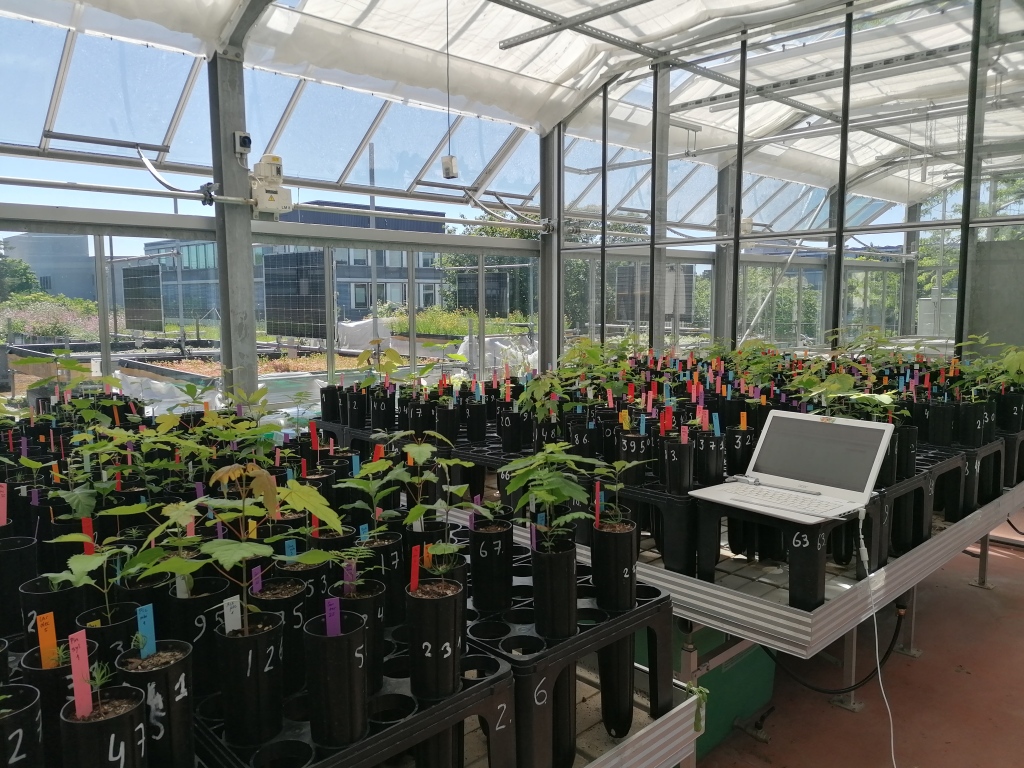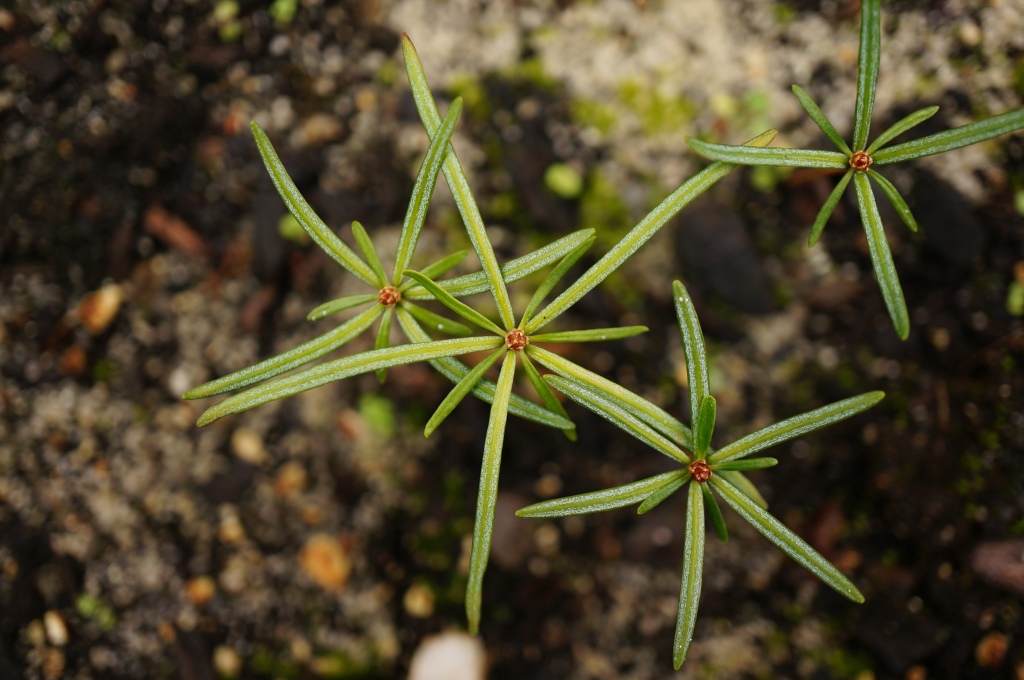|
Getting your Trinity Audio player ready...
|

Photo credit: Anna Görlich
Most trees die as seedlings
When we think about tree mortality, we tend to think about large trees falling in a storm or burning down in a forest fire. Nevertheless, most trees die as small seedlings, often just weeks or months after they have germinated. This is because the young seedlings are vulnerable to extreme temperatures or to drought. Their leaf tissue is still soft and easily damaged by, for example, late frost in the spring. Similarly, their root system is still underdeveloped, making periods of drought potentially dangerous. Which seedlings will survive, and which ones won’t, isn’t arbitrary, because the surviving seedlings will ultimately form the future forests.
We were interested in finding out how seedlings of different species of temperate trees tolerate climatic stress, like heat, drought or frost. Especially, we were wondering if there are trade-offs in the ability to tolerate the different stressors: would, for example, the ability to tolerate extreme heat hamper the species’ ability to tolerate extreme cold? If so, what would happen if, for example, the intensity of heatwaves increases in areas where species are naturally resistant to frost events? Will there be problems in terms of adapting to changes in multiple different climatic stressors?
What we found was that most seedlings were either tolerant to all three stressors (frost, drought, heat), or vulnerable to all of them. In other words, tolerance to one stressor can help the seedling to tolerate other climate extremes. This is potentially good news in terms of seedling survival in the future: if different extreme events become more frequent in the same areas, tree seedlings might be able to withstand the different stressors equally well. On the other hand, if environments where climate has so far been benign suddenly become more stressful, we might expect changes in species composition of the forests in the future.

Growing a forest in a greenhouse
To carry out the research, we had to grow hundreds of small tree seedlings in a greenhouse, from dozens of different species. Working in the greenhouse felt at times as if one were far above a mixed-species forest, looking down at a canopy consisting of different broadleaves and conifers.
To investigate how seedlings tolerate heat, we measured how physiological processes related to photosynthesis were working after the leaves had experienced heat stress. For the measurements to work properly, the samples had to be “dark-adapted”, in other words, left to be in complete darkness before and during the measurements. We ended up doing this by covering all the windows of the lab with black tarp. We would have to sit hours in a pitch-dark room to measure hundreds of leaf samples.
How will our future look?
We carried out the experiment during summer 2021, when most of Europe experienced a severe heatwave. It felt alarming to be recording critical leaf temperatures of high 30s and low 40s at the same time as new heat record for Europe was measured, 48.8°C in Sicily. Seeing the actual heat damage on the leaves was also startling. The leaf samples that experienced higher temperatures would turn dark or even completely black: a sign of the tissue dying. The physiological response we were measuring would change as well. Under normal conditions, the structures that are responsible for photosynthesis respond to a pulse of light in a recognizable pattern. In higher temperatures, this signal starts deteriorating, visibly becoming more unstable and chaotic.
There is somehow a difference in knowing the effects of extreme heat and seeing them yourself. As scientists, we often tend to think that providing information on a situation will be enough to change behavior, or policy. This is how I used to think, and what motivated me to become an ecologist: increasing our understanding of the natural world would surely help to protect it as well. During my time as a researcher, my view has changed. I now think that information itself is not useful, unless it is communicated in a way that connects with people in meaningful ways and ultimately enables us to change our way of thinking. Preventing the worst consequences of the climate and nature crisis we are facing doesn’t require new information on the consequences or drivers of the crisis. We have all that information already. What do we need to do differently to make sure that the information we have gathered about the natural world ends up helping to protect it?

Kristiina Visakorpi is writing from the Norwegian University of Science and Technology. Her piece for the Journal of Ecology is entitled: ‘Leaf-level resistance to frost, drought and heat covaries across European temperate tree seedlings here: https://besjournals.onlinelibrary.wiley.com/doi/full/10.1111/1365-2745.14254
More work can be found here: https://besjournals.onlinelibrary.wiley.com/doi/full/10.1111/1365-2435.14228 Also on her website here: https://krisvisa.github.io/
